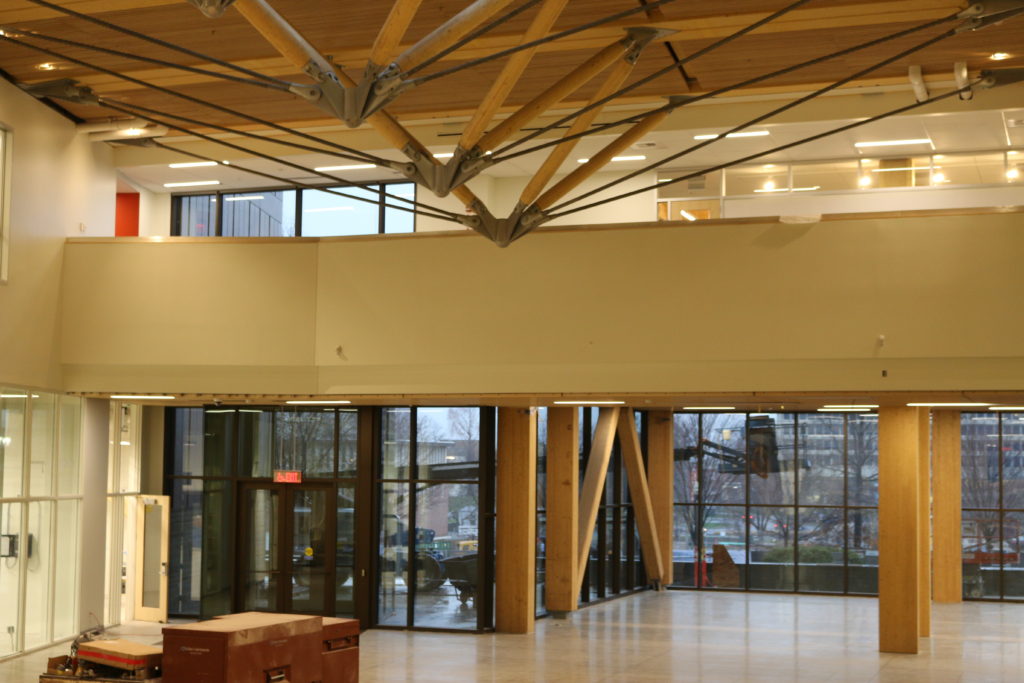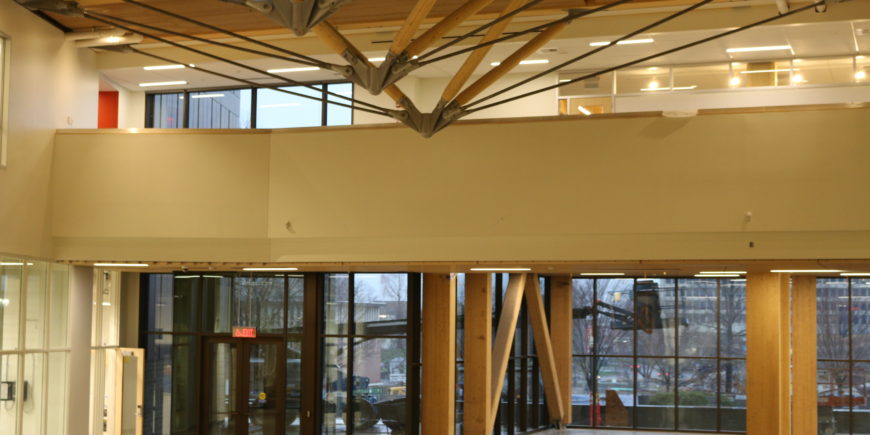
Cross Laminated Timbers (CLT) are the hottest innovation in wood products and building construction in decades. Often called “plywood on steroids”, CLT panels custom built from multiple layers of planks laid at right angles and glued together under pressure, are being used in innovative tall buildings around the U.S. and the world, showing potential to make buildings more environmentally sustainable and more affordable than conventional concrete and steel structures, while using a lot more wood. The recently completed Design Building at the University of Massachusetts in Amherst highlights the use and potential of custom built CLT construction.
Can these new innovations become a major market for wood grown and harvested in New England? Can local species be used to produce cross-laminated timbers? What would be needed to develop a CLT market and industry in New England?
Those are questions that researchers from the Finnish consulting firm Poyry Global investigated in a just-released new study about the potential for developing a cross-laminated timber market in the Northeast.
Poyry’s Director Cormac O’Carroll provided a summary of the study’s findings at a program at the Design Building on April 5th. O’Carroll said their study found that there was a large potential market for CLT panels in the Northeast creating an opening for a potential CLT manufacturer in New England. Based on experience in Europe and given the reduced labor costs of CLT construction, CLT might readily gain a one percent or greater share of the northeastern market for engineered wood products, particularly in the construction of mid height (3 to 8 story) apartment or office buildings. And, given the extensive forest cover in New England with large amounts of hemlock timber which can be adapted to build the panels, a new CLT manufacturer might create a new market for up to 20 million board feet of hemlock planks per year, providing a new market for local sawmills and landowners for an underutilized species.
A CLT production facility would cost up to $20 million to build from scratch, O’Carroll said, but construction costs could be substantially reduced if an existing facility was adapted for the purpose. Cost and revenue estimates that Poyry developed show a realistic potential for a profitable CLT industry. A typical CLT plant would employ about 30 people to construct and machine the panels and support another 150 jobs in logging, sawmilling and trucking.
Important steps that need to be completed to allow CLT to grow here include revising building codes to allow wood construction in taller buildings, and ongoing research to determine how hemlock and other local species can be used in CLT panels.
Massachusetts Economic Development Secretary Jay Ash also spoke at the Amherst meeting, saying the state was interested in helping facilitate and finance a CLT manufacturer.
